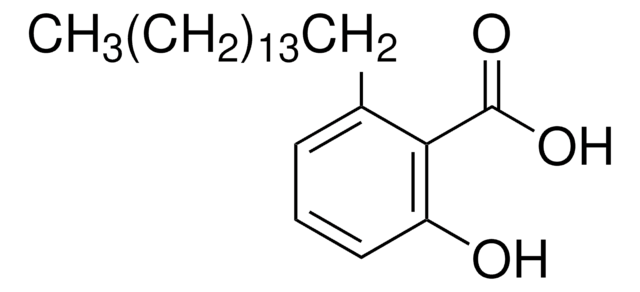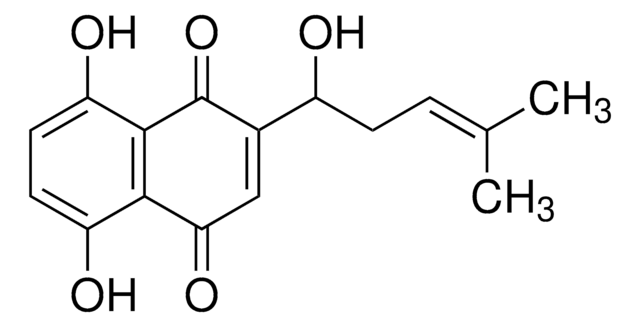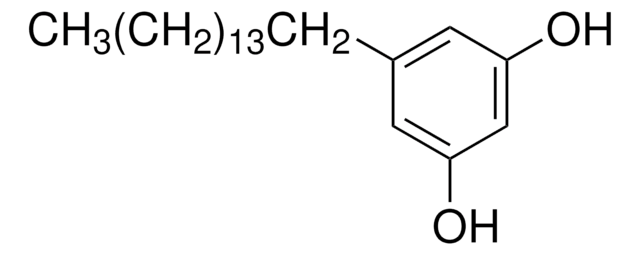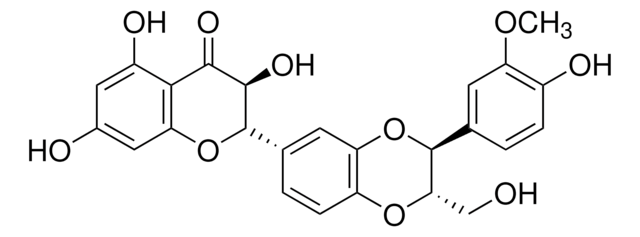172050
Anacardic Acid
The Anacardic Acid, also referenced under CAS 16611-84-0, modulates the biological activity of Anacardic. This small molecule/inhibitor is primarily used for Cell Structure applications.
동의어(들):
Anacardic Acid, AA, 2-Hydroxy-6-pentadecylbenzoic Acid, 6-Pentadecylsalicylic Acid, Aurora Kinase A Activator, Histone Acetyltransferase Inhibitor III, SUMOylation Inhibitor II, HAT Inhibitor III, p300/CBP Inhibitor III, PCAF Inhibitor I
About This Item
추천 제품
Quality Level
분석
≥95% (HPLC)
양식
solid
제조업체/상표
Calbiochem®
저장 조건
OK to freeze
protect from light
색상
white
solubility
DMSO: 10 mg/mL
ethanol: 10 mg/mL
methanol: 10 mg/mL
배송 상태
ambient
저장 온도
2-8°C
SMILES string
Oc1c(c(ccc1)CCCCCCCCCCCCCCC)C(=O)O
InChI
1S/C22H36O3/c1-2-3-4-5-6-7-8-9-10-11-12-13-14-16-19-17-15-18-20(23)21(19)22(24)25/h15,17-18,23H,2-14,16H2,1H3,(H,24,25)
InChI key
ADFWQBGTDJIESE-UHFFFAOYSA-N
일반 설명
생화학적/생리학적 작용
HAT
포장
경고
재구성
기타 정보
Kishore, A.H. 2008. J. Med. Chem.51, 792.
Balasubramanyam, K., et al. 2003. J. Biol. Chem.278, 19134.
Paramashivappa, R., et al. 2002. J. Agric. Food Chem.50, 7709.
법적 정보
Storage Class Code
11 - Combustible Solids
WGK
WGK 3
시험 성적서(COA)
제품의 로트/배치 번호를 입력하여 시험 성적서(COA)을 검색하십시오. 로트 및 배치 번호는 제품 라벨에 있는 ‘로트’ 또는 ‘배치’라는 용어 뒤에서 찾을 수 있습니다.
자사의 과학자팀은 생명 과학, 재료 과학, 화학 합성, 크로마토그래피, 분석 및 기타 많은 영역을 포함한 모든 과학 분야에 경험이 있습니다..
고객지원팀으로 연락바랍니다.








